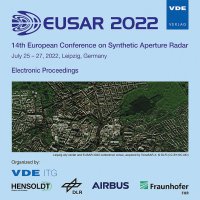Towards a Symbiosis of Model-Based and Machine Learning Forest Height Estimation based on TanDEM-X InSAR
Konferenz: EUSAR 2022 - 14th European Conference on Synthetic Aperture Radar
25.07.2022 - 27.07.2022 in Leipzig, Germany
Tagungsband: EUSAR 2022
Seiten: 4Sprache: EnglischTyp: PDF
Autoren:
Mansour, Islam; Hajnsek, Irena (Institute of Environmental Engineering, ETH Zürich, Switzerland & Microwaves and Radar Institute, German Aerospace Center (DLR), Weßling, Germany)
Papathanassiou, Konstantinos; Haensch, Ronny (Microwaves and Radar Institute, German Aerospace Center (DLR), Weßling, Germany)
Inhalt:
There is a necessity for developing and incorporating retrieval models, including Physical Models (PMs) and Machine Learning (ML) models for the inversion of geophysical parameters from multi-parameter SAR data. Over the last two decades, interferometric synthetic aperture radar (InSAR) measurements have been used for forest height estimation by means of (physical) model inversion. However, the inversion performance is constrained by the underlying assumptions and/or simplifications (primarily projected on the vertical reflectivity function) required to obtain a balanced inversion problem. A recent example of such a simplification is the model inversion for the estimation of forest height from single baseline single-polarimetric TanDEM-X (single-pass) interferometric measurements. This paper contributes to the generalization of forest height inversion by comparing the performance of two Machine Learning (ML) approaches for estimating forest height from single baseline single-polarimetric TanDEM-X (single-pass) interferometric coherence measurements and comparing their performance against state-of-art PM estimates. Approach 1 is an implementation of a conventional ML with two input variables (vertical wavenumber kappaz, and coherence |gammavol|) to estimate the target variable (forest height hv), which is baseline-dependent. Approach 2 is the first attempt to integrate model-based knowledge in the ML approach and use a single input variable (coherence |gammavol|) to estimate the target variable (product of vertical wavenumber kappaz and forest height hv), which is baseline-independent, and does not require a large space of baselines for generalization.


